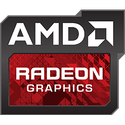
Razer Officially Launches PC Remote Play
Razer, the leading global lifestyle brand for gamers, today announced the official launch of Razer PC Remote Play, the ultimate platform for streaming PC games directly to mobile devices. Razer PC Remote Play unlocks the full potential of your gaming rig by streaming your favorite PC game titles to your phone, tablet, or Windows handheld with unmatched visual clarity and responsiveness. By leveraging the full frame rate and resolution of your mobile device gamers will experience pristine visuals without black bars.
Introduced at CES 2025, the beta version of Razer PC Remote Play received great fanfare amongst users. The official launch brings a redesigned interface on Razer Cortex PC, along with added support to all mobile gaming controllers compatible with iOS or Android operating systems, support for the AV1 video codec for improved quality and lower latency, and software updates that improves the gaming experience for seamless PC gaming on the go. Gamers can now look forward to ultra-smooth, high-fidelity gameplay on smartphones and tablets - anywhere, anytime.
Introduced at CES 2025, the beta version of Razer PC Remote Play received great fanfare amongst users. The official launch brings a redesigned interface on Razer Cortex PC, along with added support to all mobile gaming controllers compatible with iOS or Android operating systems, support for the AV1 video codec for improved quality and lower latency, and software updates that improves the gaming experience for seamless PC gaming on the go. Gamers can now look forward to ultra-smooth, high-fidelity gameplay on smartphones and tablets - anywhere, anytime.






































































